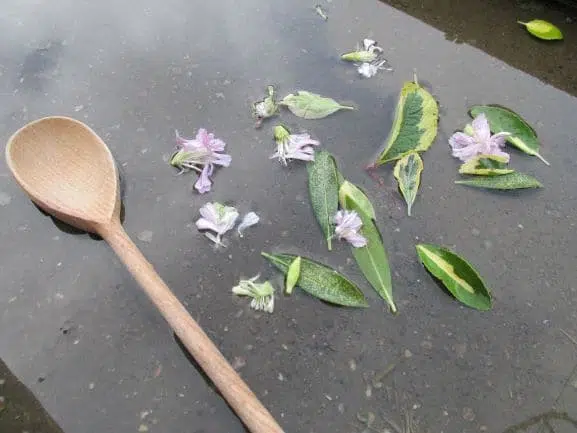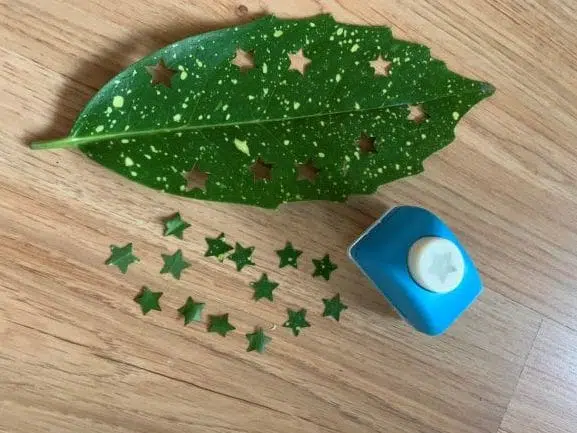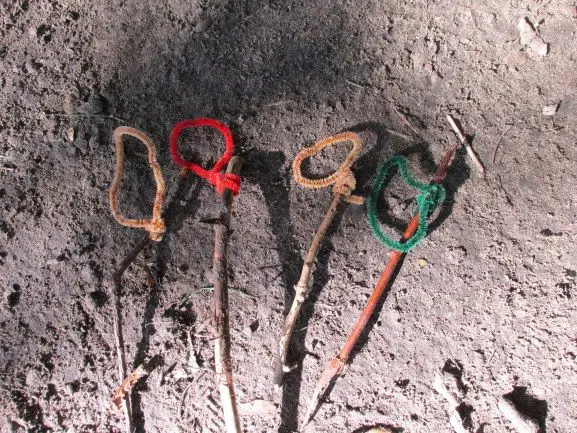Do you have children that enjoy tipping everything out of baskets?
Or a kid that likes spreading objects all over the place with their hands, arms, or feet?
It is highly likely that these children are demonstrating a scattering schema.
A scattering schema is not one of the more commonly talked about schemas, but nevertheless is a common one that we all have witnessed.
Put simply, a child with a scattering schema will be interested in scattering objects around them. Conversely, some of these children will also be interested in tidying objects away.
In this post, I’ll look at exactly what a scattering schema is, and then look at the best experiences and activities that support this type of schema.

What Is A Schema?
A schema is a repeated pattern of behavior demonstrated by a child.
The theory of schemas was first developed in the 1920s and has been a part of child development psychology ever since.
Children create models of reality in their minds. Schemas help them test these models.
Schemas are a brilliant way to understand how children think, and how they see the world around them. Supporting schemas can also help deepen children’s learning, and help them make better progress.
Here is an example of a schema: a child repeatedly transports a range of objects around the learning space using bags, boxes, and other containers. This child is probably demonstrating a transporting schema.

Another child enjoys putting objects into a range of different containers. This child may well be demonstrating a containment schema.
There are many known schemas, but most commonly talked about are the following nine (of which, admittedly, scattering is not one):
Transporting
Connecting
Transformation
Enveloping
Enclosing
Rotation
Orientation
Trajectory
Positioning
What Is A Scattering Schema?
The clue is in the name here!
A child with a scattering schemer is interested in scattering objects around them. These children may tip boxes out, spread objects over the floor, or enjoy sitting in scattered objects and further scattering them with their hands, feet, or legs. (Source)
It’s a schema we all see very often!
What Are They Learning?
Children with a scattering schema are learning about spatial awareness. They are learning about order and disorder, and how objects interact with a space.
These children learn through sensory experiences.
What To Look Out For With A Scattering Schema
Children might:
- Empty out lots of baskets onto the floor, and seem more interested in the actual emptying process than in using the objects
- Mix and stir objects around that have already been scattered
- Enjoy the physical action of scattering things such as leaves or grass below
Why Should We Support Schemas?
Although it’s not always obvious why we would want to support schemas (particularly one like scattering, where children may sometimes seem to be creating mess and chaos around them), there are many benefits to allowing them to flourish.
By supporting schemas, we help children:
- Intensify their play experiences
- Help them think and flourish
- Support children in testing out their mental constructs of reality
- Help children make good progress
How To Support A Scattering Schema
A scattering schema could be seen as potentially one of the more destructive to a learning space if not handled well.
No one wants their classroom space to be turned upside down by children dumping all the resources out of boxes.
However, the force of a scattering schema can be harnessed by making scattering a positive experience.
You can do that in some of the following 11 ways:
11 Experiences And Activities That Support A Scattering Schema
1. Jackson Pollock Art With Pipettes
This is one of my all-time favorite art activities to start with.
Hang up some bedsheets outside. Mix paint with water and place in pots.
You can use pets for this, or even turkey basters for a really extreme experience!
Dip the pipettes or turkey basters into the paint, suck some up, and then fire it at the bedsheets! This creates a wonderful Jackson Pollock-inspired spattering and splattering picture, the ultimate art experience for a child with a scattering schema!
2. Leaf Confetti
You can buy a range of hole punches that create differently shaped holes in materials.
You can get hole punches that create:
- Hearts
- Half-moons
- Squares
- Stars
Use these hole punches to punch holes into leaves. This will create beautifully patterned sleeves, and also when you open the hole punch up, you can find all the little pieces of leaf confetti.
Leaf confetti can be scattered outside in whatever way the children like!

3. Scattering Leaves In The Wind
This is probably the number one scattering activity. It works particularly well on windy days.
Children enjoy throwing bundles of leaves up into the air and experiencing them raining down over them.
You could have a leaf collecting hunt first, or follow the scattering.
4. Play Trays With Scattered Objects
Is with different scattered objects in them offer a contained environment for children to explore a scattering schema.
They can basically scatter to their heart’s content, without making too much mess!
Some good materials to add to a play tray include:
- Oats
- Rice
- Dried pasta
- Small loose parts
- Beans or lentils
5. Throwing Confetti
This is great as long as you can get some biodegradable form of confetti.
6. Scattering Compost
Any natural gardening activity that involves scattering works brilliantly to harness this behavior.
Scattering compost over seeds, flower beds, or herb beds is a good one to try.
7. Blowing And Chasing Bubbles
This is another of the all-time great scattering activities.
Use bubble wands or some kind of bubble machine to make multiple bubbles.
Children can:
- Run around scattering bubbles in the air do you live
- Chase and pop the scattered bubbles
- Watch bubbles flying away in windy conditions into the sky
Recently, I tried making these natural bubble wands:

They are just sticks, with pipe cleaners twisted around the tops. The children were able to make their own.
Natural bubble wands are great for scattering bubbles into the air.
8. Ball Pools
Ball pools also work really well, as they contain the objects that are being scattered.
This reduces mess!
Ball pools are a really sensory experience for young children. They combine touch, vision, and feel.
Children can scatter balls with all parts of their bodies!
They can use their arms, hands, feet, legs, torso, and pretty much anywhere else they can think of.
9. Puddle Potions
A marvelous way to utilize puddles is to create potions in them.
Children find a variety of natural resources outside (leaves, petals, twigs, etc) and then quite simply scatter them into a puddle. They can stir and whisk the puddles with spoons or ladles.

10. Construction Sets In A Blanket Or Sheet
For children who are particularly prone to scattering, I think it makes sense when he used construction toys to first lay a large blanket out on the floor.
set the boundary that they can tip the whole box out onto this blanket, and then scatter the pieces as much as they want around it.
This contains the experience in one place, and also makes it much easier to tidy up. Just tip the contents of the blanket back into the box (this often requires adult help).
11. Scattering Seeds
This is another natural gardening activity. There is lots of scattering in nature, and scattering seeds is a good example of this.
Some good seeds include:
- Herbs
- Cress
- Small flowers
- Watering Plants
Watering plants involves the scattering of water for a purpose. Children can use watering cans of different sizes, a small hose pipe, or even squirty bottles.
12. Plenty of Containers To Transport
Children will often scatter substances like water or leaves around the learning space.
It makes sense for them to have the freedom to do this, as long as it is not negatively interfering with the play of others.
Have a range of different containers to help them transport materials like bark, water, mud, and leaves around the space.
Children scatter these substances and create all sorts of symbolic representations and purposes for them.
For example, some bark scattered on the ground could be ‘stepping stones.’
Or water scattered on the floor could be ‘a river through a magic city.’
